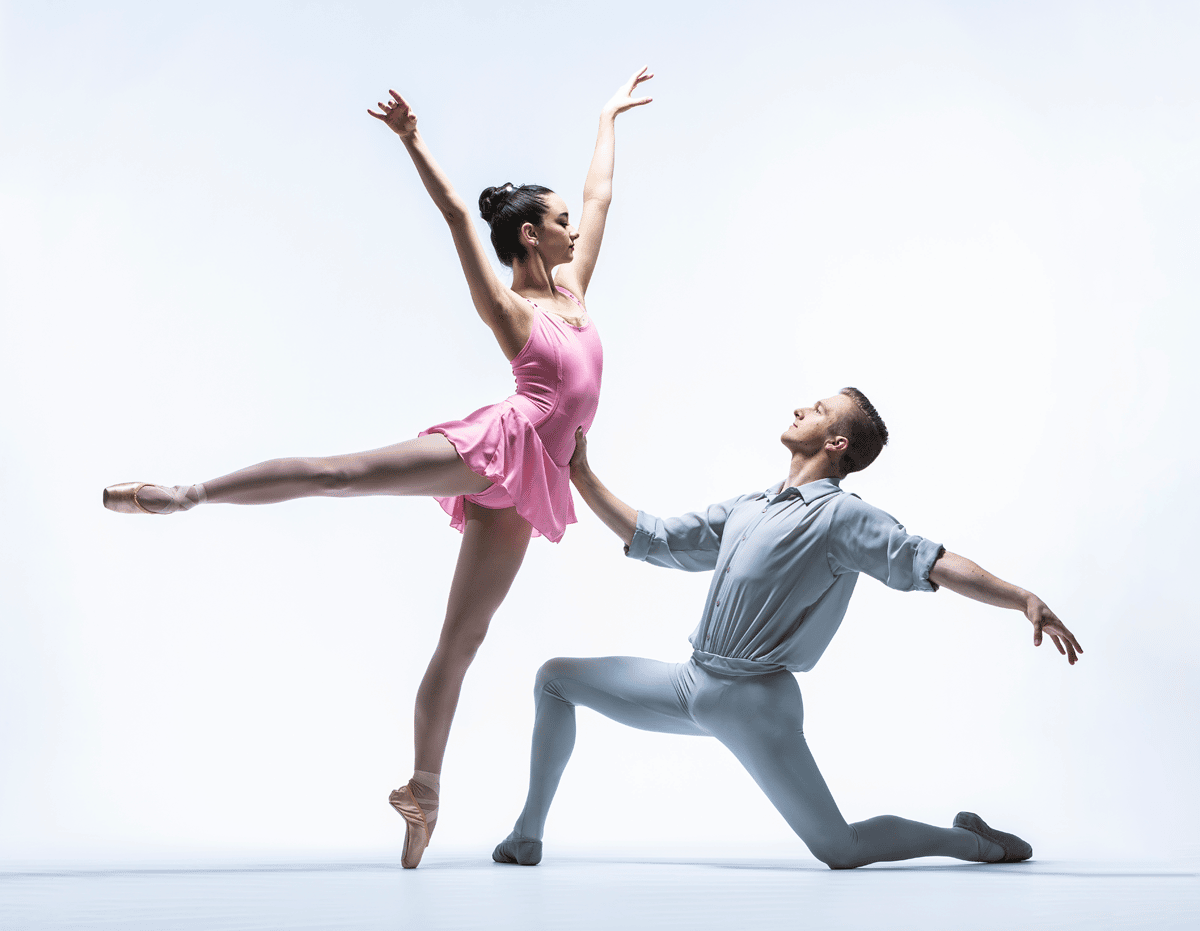
The Brigham Young University Department of Dance integrates body, mind, and spirit through performance, choreography, teaching, and scholarship. This mission aligns with the University’s goal to assist individuals in their quest for perfection and eternal life. Brigham Young University is an accredited institutional member of the National Association of Schools of Dance. One of the largest academic dance programs in the nation, BYU’s Department of Dance provides a broad base for professional training in both the classroom and the studio. Opportunities include highly mentored student and faculty collaborations, on-campus performances, community outreach, study abroad, international touring, and more.
In March 2023, BYU presents an all-Arpino performance that includes three works: Birthday Variations, Reflections, and Viva Vivaldi. This performance is part of BYU’s annual concert featuring its top-tier ballet company.
Shayla Bott is an associate professor of ballet, artistic director of BYU Theatre Ballet, ballet area coordinator, and associate chair of the Department of Dance. She earned a BFA in ballet performance and an MFA in ballet with a focus on music, choreography, and pedagogy from the University of Utah. After retiring from a professional career with Utah Metropolitan Ballet, she has continued to choreograph and teach in professional and academic venues. Her creative work has received multiple awards. She is certified in STOTT Pilates Matwork and Reformer, and her work includes a rehabilitation-based focus to work with special populations. Current assignments include teaching Kinesiology for Dancers and conducting research to create safer training protocols for ballet dancers by fusing Pilates-based correctives with a strong focus in fascial connectivity and health into ballet technique courses. She has also successfully completed the ABT® Teacher Training Intensive in Pre-Primary through Level 7 of the ABT® National Training Curriculum.

Shayla Bott’s thoughts and reflections:
What is your personal history performing Arpino works?
I was choreographing on Ballet Arkansas and then-Artistic Director Michael Bearden introduced me to Birthday Variations, which the company was rehearsing. When I was introduced to Cameron Basden, Birthday Variations was the first ballet my co-director and I requested. It is such a gorgeous ballet and added so much to our repertoire.
As I learned more about Arpino’s works, I was blown away that he was not as well-known as George Balanchine! I fell in love with his works right away, but the more I watch them, the more depth I see in them. His works are timeless. They have the ability to help dancers find artistry and musicality through their technical studies and classroom steps. This makes them accessible to students and professionals alike, but the end result is always magic.
What does it mean to you to have BYU perform the three works on your program, as we celebrate Mr. Arpino’s centennial?
It is exciting for us to do Arpino’s works for two reasons: First, the ballets themselves are incredible. We can literally see our students become more mature in their artistry and in their partnering and technical development week after week as we rehearse until we perform. As a university program, we believe that the technical and artistic challenges we provide for our students through the repertory we select to rehearse and perform is an outgrowth of their education. It is of utmost importance to us that we are process-oriented but that we still have an excellent product onstage. All of Mr. Arpino’s works that we have performed have done just this for us. As faculty, we frequently comment that the dancers look completely different from the time we start learning an Arpino work to the time it is performed onstage.
The second reason we love to do Arpino’s works is the chance for our students to get the incredible coaching that répétiteur Cameron Basden provides for them. She meets our students where they are and supports their growth through supportive but rigorous coaching. She is tireless in demanding what is necessary for the students to perform the works, and she always succeeds in pulling out of them more than they thought possible.
How would you describe the Arpino style? What are some distinctive elements of his choreography?
It is hard to comment on the Arpino style in a brief sentence, but if I could say anything about Arpino’s works, it’s that he has taken pure classical ballet and made classroom steps utterly dance-able. The off-centeredness, over-exaggeration of the port de bras, and the incredible musicality make classroom steps (and some non-classroom steps of course) interesting to dance and interesting to watch. The partnering, patterns, and spacing are unique but not overly so as to make his works overly cerebral. When you see an Arpino work, you feel something. And when they are performed well, the seamless work and performance casts a spell that isn’t broken until the last refrain is heard.
How does dancing Arpino ballets prepare a dancer for other types of repertory?
Because of the purity of what is expected of dancers in an Arpino work, the partnering skills, musicality, and attention to detail are completely transferrable to other ballets. There are no specialized techniques or shapes that are not easily pulled back into the confines of classical ballet when needed. Performing an Arpino work teaches the dancers how to emote with the whole body through the technique and artistry, rather than by overly demonstrative port de bras and facial expressions as is sometimes seen in story ballets.
